Are you looking to give your home a unique and classic look? Board and batten siding is a great option that can add charm and style to any house. This type of siding is easy to install and will last for years to come. In this article, we’ll walk you through the process of installing board and batten siding so that you can get the perfect look for your home.
Disclaimer: This article is meant to be a guide for those interested in installing board and batten siding on their home. We strongly suggest that you consult with a professional contractor before attempting any project of this nature. Advance Roofing LLC has been proudly offering the Spokane, WA area high-quality roofing solutions for many years. Their expert team of professionals can provide advice on the best approach for your individual needs and budget. Should you choose to pursue this project, we wish you all the best!
Explanation of Board and Batten Siding
Board and batten siding is a classic design element that has been used for centuries. It is a siding style where wide boards are placed vertically, and narrow strips of wood called battens are placed over the seams between the boards. It creates a vertical pattern that adds visual interest and texture to an otherwise flat surface. This type of siding has gained popularity in recent years, especially in modern farmhouse and contemporary house designs. In this article, we will discuss how to install board and batten siding on your home, its benefits, and how to properly care for it to ensure its longevity.
Preference of Board and Batten Siding
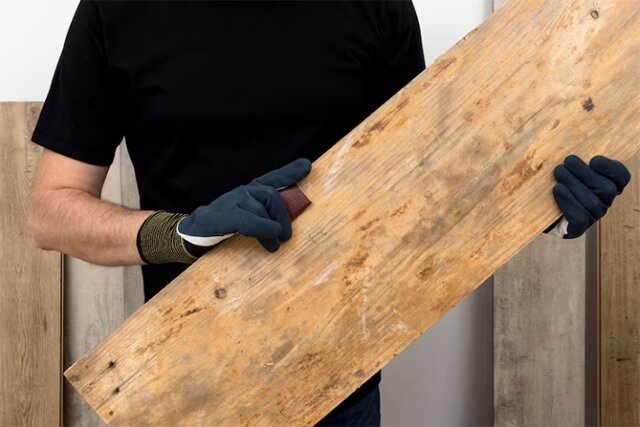
Board and batten siding is a classic and versatile siding style that can enhance the look of any home. It is a type of vertical siding that is made up of wide boards and narrow strips, known as battens, that are placed over the seams. This gives the exterior of a house a natural, textured look that is both traditional and contemporary. Here are some of the benefits of board and batten siding:
- Durability: Board and batten siding is made from durable materials such as fiber cement siding, which is resistant to moisture damage and insect infestation. This means that it will last for many years with minimal maintenance.
- Low Maintenance: Unlike traditional wood siding, board and batten siding requires less maintenance. Wood board and batten siding is especially vulnerable to problems like moisture damage and insect infestation, which can cause warping, rotting, or splitting. In contrast, fiber cement board and batten siding is much more resistant to these issues.
- Classic Look: Board and batten siding has a timeless look that never goes out of style. It is a popular choice for homeowners who want to give their homes a classic and elegant look.
- Versatile: Board and batten siding comes in a wide range of colors and styles, making it a versatile choice for any home. Whether you are looking for a modern farmhouse or a more traditional European-style building, board and batten siding can be customized to meet your needs.
In conclusion, board and batten siding is an excellent choice for homeowners who want a durable, low-maintenance siding option that offers a classic and versatile look. Whether you are building a new home or renovating an existing one, board and batten siding is an investment that you won’t regret.
Types of Board & Batten Siding
Board and batten siding is a classic and versatile siding style that has found a place in modern exterior design. If you’re considering this enduring look for your home, you may be wondering about the various types of board and batten siding available. Two of the most popular options – fiber cement and vinyl. Let’s take a closer look at each one to see which material might be the best fit for your home.
Fiber Cement and Vinyl
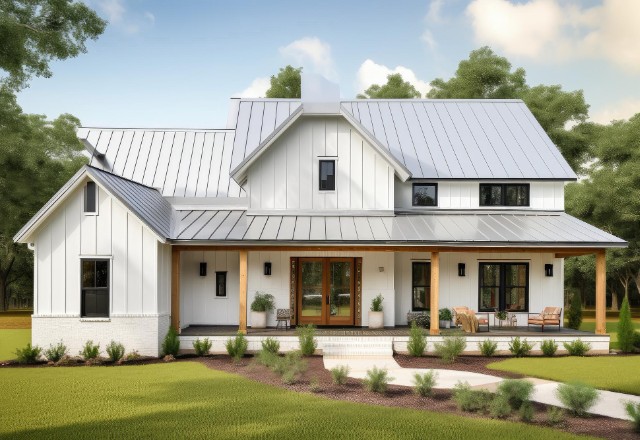
Fiber cement is a modern and versatile material that offers a lot of benefits for homeowners who want a durable, low-maintenance option for their board and batten siding. Made from a combination of cement, sand, and cellulose fiber, fiber cement is designed to mimic the look of natural wood without the risk of moisture or insect damage. One of the biggest advantages of fiber cement siding is its remarkable durability. It’s resistant to rot, fire, and pests, and it holds up incredibly well against harsh weather conditions. Additionally, fiber cement is a cost-effective solution that can be customized to match the color and style of your home without the need for regular maintenance. When it comes to choosing a particular type of fiber cement siding for your board and batten project, consider your climate. If you live in an area with lots of rain or humidity, look for options that have been manufactured to resist moisture damage.
Vinyl is another popular material that can be used for board and batten siding. It’s an affordable and lightweight option that’s easy to install and maintain over time. Vinyl siding is made from PVC (polyvinyl chloride) resin and is available in a wide variety of colors and textures. One of the benefits of vinyl siding is that it’s incredibly versatile, and can easily be customized to match your home’s existing aesthetic. Additionally, vinyl is resistant to moisture, fading, and insect damage, making it a low maintenance option for homeowners who want to minimize upkeep requirements. When it comes to choosing a particular type of vinyl siding for your board and batten project, it’s important to be aware of potential drawbacks. Vinyl can sometimes be prone to cracking or warping over time, especially in areas with extreme weather conditions. Additionally, not all vinyl siding is created equal, so be sure to choose a high-quality option that’s designed to stand up to the demands of your climate.
Ultimately, both fiber cement and vinyl have their advantages and disadvantages, so it’s important to consider these factors carefully when making your decision. To choose the right material for your board and batten siding, consider factors such as durability, color, upkeep, and cost. With the right material, you can create a timeless and eye-catching look for your home that will last for years to come.
Natural Wood
If you’re looking for a timeless, rustic aesthetic for your board and batten siding, natural wood is a sought-after option. Wood boards can be stained or painted in a variety of colors to achieve the desired look and add curb appeal to your home.
However, natural wood siding requires proper care to prevent insect damage, moisture damage, and gaps between boards, which can compromise the structural integrity of the siding. Insect damage can be caused by termites or other pests that can bore into the wood and leave it vulnerable. Moisture damage can occur when water seeps into the cracks and crevices of the wood, causing rot and decay.
To maintain the natural wood look of board and batten siding, it’s important to apply a protective finish every few years to prevent weathering and fading. A clear sealant is a great option for this, as it helps to repel moisture and protect the wood from UV damage.
Proper maintenance is essential to keep your natural wood siding looking great over the long term. This includes cleaning the siding regularly with a gentle cleanser and inspecting it for signs of damage or wear. In addition, be sure to keep vegetation trimmed away from the siding to prevent moisture buildup and insect infestations.
Natural wood board and batten siding is a durable and beautiful option that can add value and style to your home. With proper care and maintenance, it can last for many years and provide a classic look that never goes out of style.
Wide Range of Colors and Textures Available
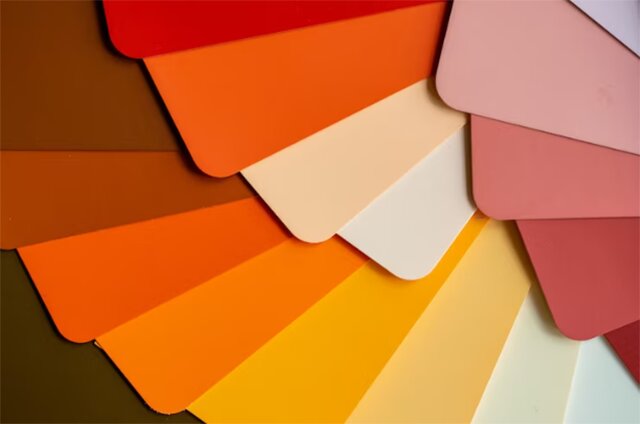
Board and batten siding has become increasingly popular due to its classic yet modern aesthetic, making it a sought-after choice for homeowners looking to enhance their homes’ curb appeal. In addition to its timeless appeal, one of the benefits of board and batten siding is the wide range of colors and textures available to choose from.
Board and batten siding can come in a variety of colors, ranging from bold and vibrant hues like turquoise and red to more subdued shades like white and black. These options make it easy for homeowners to personalize their homes’ exterior and create a unique look that stands out in their neighborhood.
Texture is also an important aspect to consider when selecting your board and batten siding. Textured walls can add depth and character to your home, allowing it to stand out from the rest. Combining different textures, such as using a gray board and batten fiber cement siding to complement a dark blue lap and brick, can create a fresh and welcoming look that accentuates the unique architectural features of your home.
When choosing the color and texture of your board and batten siding, it’s important to consider the overall aesthetic you want to achieve. A contrasting color scheme can create a striking visual impact, while tonal colors can be soothing and calming. Similarly, you can play with different textures to create a consistent and harmonious look that enhances your home’s facade.
In conclusion, board and batten siding provides a wide range of colors and textures to choose from, giving homeowners the freedom to personalize their homes’ exterior. Whether you’re looking for bold and vibrant colors or subtle and neutral hues, board and batten siding offers endless possibilities to create a unique look that enhances your home’s curb appeal.
Preparing for Installation
Before installing board and batten siding, there are several steps you should take to prepare your home’s exterior. This includes assessing the condition of your current siding and addressing any necessary repairs, selecting the right materials and tools for the job, and ensuring proper weatherproofing and insulation before beginning the installation process. By taking these steps, you can ensure a smooth and successful installation and enjoy the many benefits of this classic siding style for years to come.
Checking Building Codes and Permits
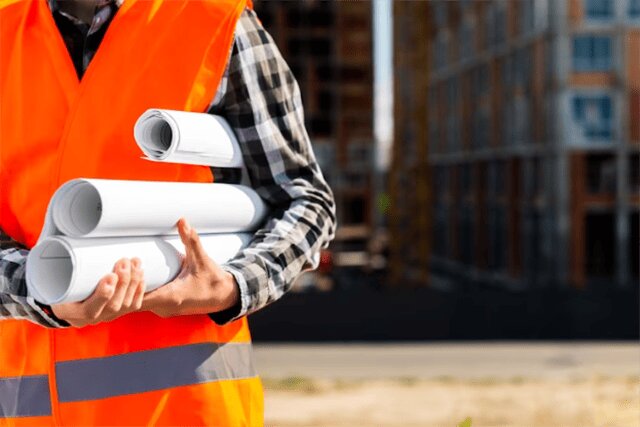
Before installing board and batten siding on your home, it’s essential to check your local building codes and obtain any necessary permits. Building codes vary by location and can dictate the types of materials and methods used in construction projects.
Contacting your local building department is the first step in determining the specific requirements for your area. They can provide you with the necessary information and documentation needed to ensure your project is up to code.
In some cases, building codes may require additional shear protection before installing siding. This protection can include installing a plywood layer or other reinforcement to help strengthen the structure.
Gathering all relevant information before starting your project is crucial to ensure you are in compliance with local regulations. Failure to obtain the proper permits or adhere to local building codes can result in fines or legal penalties.
It’s important to note that building codes and permit requirements can vary depending on the location and type of project. Therefore, it’s crucial to do your research and seek guidance from your local building department to ensure all necessary permits are obtained and all codes are followed.
By taking the time to check building codes and obtain permits, you can ensure that your board and batten siding installation is done correctly and legally. This will provide peace of mind and ensure the structural integrity of your home for years to come.
Assessing the Walls and Structure of Your Home

Before installing board and batten siding on your home, it’s important to assess the walls and structure to ensure proper installation and prevent any potential damage. Here’s how to assess your home’s walls and structure:
- Inspect the Walls – Start by inspecting your home’s walls to check for any moisture or insect damage that could affect the structural integrity of your home once the siding is installed. Look for cracks, rotting wood, or signs of insect infestation. Any damage that’s found should be repaired before installing the siding.
- Check for Gaps Between Boards – Look for any gaps between the boards, especially around windows and doors. These gaps could allow moisture to seep in and cause damage over time. If you find any gaps, make sure to fill them with a high-quality sealant to prevent moisture from entering.
- Determine the Appropriate Type of Siding – The type of board and batten siding you choose should be based on the wall type and design of your home. For example, if your home has textured walls, a vertical siding style will work best, while horizontal siding works well for homes with smooth walls. Additionally, consider the material of the siding, such as fiber cement or natural wood, based on your preferred aesthetic and durability needs.
- Evaluate the Area and Measure the Size – Before purchasing the siding, make sure to evaluate the area where you want to install the siding and measure the size accurately. This will help you determine how much siding you’ll need to purchase, as well as which accessories, such as trim and molding, you’ll need to complete the installation.
Overall, assessing the walls and structure before installing board and batten siding is crucial. Making sure your home is properly prepared will help ensure a successful installation and prevent any potential damage to your home’s structural integrity.
Measuring and Marking the Wall Areas for Cutting Out the Battens
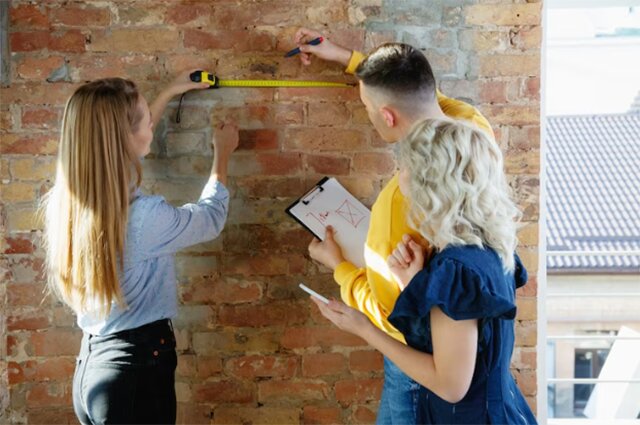
To achieve a precise fit, it is essential to accurately measure and mark the wall areas where the battens will be installed. Here are the steps to follow for measuring and marking the wall areas for cutting out the battens:
- Describe the Layout Plan of the Vertical Boards and Battens. Before measuring and marking the wall areas, it is crucial to outline the layout plan of the vertical boards and battens. Decide on the spacing between the boards and the size and placement of the battens. This will help you determine the measurements and placements of the boards and battens on the wall.
- Measure the Height and Width of Each Board and Batten. Using a tape measure, measure the height and width of each board and batten. Measure twice to ensure accuracy. Once you have the measurements, mark them accordingly onto the siding panel using a pencil or marker.
- Use Chalk Lines and T-Squares. Introduce the use of chalk lines and T squares to keep markings straight and consistent. Chalk lines are particularly helpful when marking long distances or marking lines across the entire wall. T-squares, on the other hand, help to maintain a straight and squared line to ensure a professional finish to your project.
By precisely measuring and marking the wall areas, you can ensure a seamless and professional installation of your board and batten siding. Keep in mind the importance of accuracy and consistency and use tools like chalk lines and T-squares to assist in the process.
Installing Board & Batten Siding
Board and batten siding is a classic, vertically-oriented siding style that adds instant curb appeal to any home. Whether you want a traditional or modern aesthetic, board and batten siding comes in a wide range of materials and colors to suit your design ideas. However, proper installation is key to ensuring the structural integrity of your siding and preventing insect and moisture damage. Here, we’ll cover the steps required to install board and batten siding correctly, so you can achieve the desired look and proper function of your home’s exterior.
Planning the Layout of Boards and Battens on the Wall Surface

When installing board and batten siding, it’s important to plan and arrange the vertical boards and horizontal battens in a way that will complement the overall architectural design of your home. This starts with considering the size and shape of the wall surface.
Before you begin the installation process, it’s a good idea to sketch a rough layout to visualize how the siding will appear on your wall surface. This will help you plan for a consistent design and ensure that the boards and battens are arranged in a way that looks visually appealing.
As you plan the layout of your board and batten siding, consider how the siding will complement the overall architectural design of your home. You want the siding to enhance the look of your house without detracting from its traditional or modern aesthetic.
Take note of any windows, doors, or architectural details that may impact the placement of the boards and battens. Consider how the siding will look if it meets the edges of these features, or if it extends past them.
Finally, keep in mind that the size and spacing of the boards and battens can have a significant impact on the final look of the siding. Experiment with different sizes and spacing to find the best fit for your home’s design.
By carefully planning the layout of your board and batten siding, you can ensure that it complements your home’s design and adds to its overall curb appeal.
Installing the Vertical Boards

Board and batten siding is a popular choice for homeowners looking to enhance their home’s exterior appearance.
The vertical boards are the primary component of this type of siding, and it is important to install them correctly before adding the horizontal strips or battens. Here are some instructions to help you get started.
Before starting the installation process, make sure that you have all the necessary tools and materials, including siding nails or coarse-thread screws, a level, a saw for cutting the boards to size, spacers for positioning the boards, and any additional products like adhesives that you might need.
To begin, find one end of the wall where you want to install the siding and work your way towards the other end. Measure the wall and cut the boards to the required length before you start installing them. It is essential to ensure that the boards are level, so take your time and be precise when measuring and cutting them.
Next, use siding nails or coarse-thread screws to fasten each board to the sheathing or blocking. Place the nails or screws approximately every 24 inches to ensure that the boards are well-supported and will remain in place.
When positioning the vertical boards, use spacers to keep them evenly spaced and to ensure that they are level. This will help you achieve a clean, uniform look across the entire wall. Use a level to double-check that the boards are straight and adjust them as needed.
Once you have installed all of the vertical boards, you can add the horizontal strips or battens to complete the board and batten siding. Remember to follow the manufacturer’s instructions carefully to ensure proper installation and to protect the siding from moisture and insect damage.
In conclusion, installing vertical boards is an essential part of creating beautiful board and batten siding. By following these instructions and taking the time to do it right, you can achieve a traditional or modern aesthetic that enhances the look of your home.
Installing the Horizontal Strips (Battens)
Board and batten siding is a classic siding style that features vertical boards and horizontal strips, also known as battens. The horizontal strips play an important role in keeping the vertical boards in place and give the siding its distinctive look. In this article, we’ll go over the steps to install the horizontal strips for board and batten siding.
Before starting the installation process, make sure you have all the necessary tools and materials, including siding nails or coarse-thread screws, a level, a saw for cutting the battens, and spacers for positioning the battens.
To begin, measure the distance between each vertical board. Once you have the measurement, cut the battens to the appropriate length. The strips should be cut to the same measurement as the distance between the vertical boards to ensure a consistent look.
For a clean and polished appearance, make sure that the horizontal strips are evenly spaced apart. Begin securing the strips to the wall, starting at the top and working your way down. Use a level tool to ensure that the battens are straight and flush against the wall to avoid any gaps or unevenness.
Fasten the horizontal battens using the same fastener used for the vertical boards. This ensures that the battens are securely attached to the wall and can hold the vertical boards in place. Place the siding nails or coarse-thread screws approximately every 24 inches to ensure that the battens are well-supported and will remain in place.
Proper installation of the horizontal strips is essential to protect the siding from moisture and insect damage, and to maintain the structural integrity of the siding. By following these steps, you can achieve a beautiful and durable board and batten siding with a modern aesthetic.
In summary, to install the horizontal strips or battens for board and batten siding:
- Measure the distance between each vertical board.
- Cut the horizontal strips to the appropriate length.
- Ensure that the battens are evenly spaced apart for a clean and polished look.
- Use a level tool to ensure that the battens are straight and flush against the wall.
- Fasten the horizontal battens using the same fastener used for the vertical boards.
- Place the siding nails or coarse-thread screws approximately every 24 inches to ensure that the battens are well-supported and will remain in place.
Finishing Touches to Complete Your Exterior Design
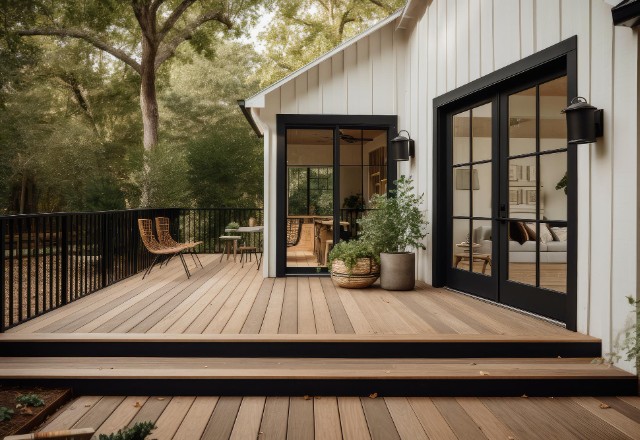
When designing your home’s exterior, it’s important to pay attention to the finishing touches in order to achieve a polished and cohesive look. This is what ultimately sets apart a basic design from one that truly stands out with stunning curb appeal. Here are a few finishing touch ideas to consider for your home’s exterior:
- Trim: Adding trim around doors and windows is a subtle yet impactful finishing touch that takes your exteriors from plain to polished. Trim comes in a wide variety of materials, ranging from wood to PVC and vinyl, and can be customized to fit any home style.
- Color Matching: Paint any visible pipes or vents to match the siding color of your home. Not only does this help them blend in seamlessly, but it also gives a cohesive look to the exterior of your home. Another tip is to ensure that any visible screws or nails are painted over or replaced with color-matching hardware to avoid any visible distractions from the overall design.
- Secure Fastening: It’s crucial to make sure all the siding and trim pieces are securely fastened to prevent any potential damage to the exterior. Loose or poorly installed materials can easily be damaged in the event of strong winds or other weather conditions, leading to costly repairs. Make sure your materials are correctly installed to give your home long lasting durability.
If you’re not a DIY expert, it’s always best to hire a professional for these finishing touches to make sure they’re done correctly. Ultimately, focusing on these seemingly small details, such as trim, color matching, and secure fastening, will help your home stand out and leave a lasting impression on guests and passersby. With the right finishing touches, you can achieve a beautiful and cohesive design that truly enhances your home’s exterior.
Conclusion
In conclusion, installing board and batten siding can be an excellent choice for homeowners seeking to add a classic and timeless look to their homes. Whether you have a modern farmhouse or a more traditional architectural style, board and batten siding can add curb appeal and character to your home’s exterior. With a wide variety of materials, both natural and synthetic, and a range of colors and styles, you can find the perfect fit for your unique design preferences and needs.



 509-201-4190
509-201-4190
